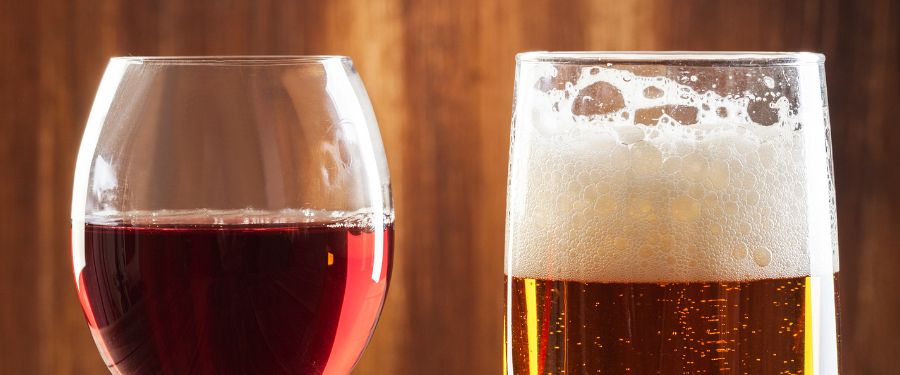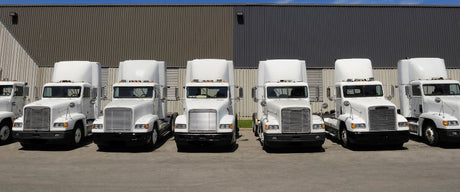Alcohol has always been a staple at Australian gatherings and social events. Whether it’s beer, wine, or spirits, Australians enjoy drinking alcohol. A recent study has shown some changes in Australian drinking trends, the biggest shift has been the popularity of wine increasing over beer in recent years.
The popularity of spirits has also seen a steady increase. In this blog post, we simplify the results seen in the ‘Apparent Consumption of Alcohol in Australia’ report and uncover what it would mean for national road safety.
Changes in Australian alcohol consumption
The recent Apparent Consumption of Alcohol in Australia study by the Australian government found a number of changes in Australian drinking patterns in regard to wine, beer, cider and spirits. Some of which record high results within the last 60 years.
Changes to beer consumption in Australia
The study found that the pure alcohol consumption in beer is at a record low at 3.49 litres per capita. From the statistics of beer consumed, 23% of this was mid-strength beer, 73% being full strength and the remaining 4.4% low strength.
This is a change from the 2009-10 consumption in beer per capita, where it was at 4.5 litres, an increase of over 1 litre.
Changes to wine consumption in Australia
The report also showed that the consumption of pure alcohol in wine was at 4.19 litres per capita, 700ml per capita more than beer. However, the study also found that the consumption of wine had decreased by .23 litres per capita from the previous year when it was 4.42 litres per capita.
In 2009-10, the consumption of pure alcohol in wine per capita was at 4.0.
Changes to cider and spirits consumption in Australia
Cider makes up only a small portion of pure alcohol consumed in the latest study at a mere .25 litres per capita, whereas spirits were at 2.1 litres per capita, a slight increase from the previous year (1.96 litres per capita).
However, the types of spirits being consumed have changed substantially. Ready-to-drink beverages (i.e. spirits mixed with soft drinks) made up 48% of pure alcohol in spirits consumed in 2007-08, but the latest study showed only 28%.
Unmixed spirits such as vodka and whiskey are at their highest level of consumption since the results of this type of alcohol were recorded in 2002, with Australians consuming an average of 1.5 litres of pure alcohol from unmixed spirits in the latest findings.
Road safety implication of the new drinking trends
Wine, vodka, whiskey and other spirits have a higher level of alcohol concentration compared to beer, especially spirits. This means that when consumed, they have a higher likelihood to raise blood alcohol content (BAC) faster than beer and other alcoholic drinks could.
This higher BAC level will obviously impair one’s driving abilities and coordination, making the act of driving and other everyday activities a hazard to the driver and those on the road. This new trend may also give Australians a false sense of sobriety as they might feel alright, whereas their BAC levels may say otherwise.
On top of this, the higher the alcohol concentration, the higher the risk of alcohol poisoning. This presents a risk factor, especially to those who are unaware of how much they are drinking or struggling addicts who partake in heavy drinking (more than 10 standard drinks a week). This poses health risks among healthy adults.
To mitigate this concern, the emphasis on responsible drinking needs to be addressed, and the awareness of the higher alcohol concentrations on these new preferred drinks needs to be raised. When drinking, individuals should also be aware of how many alcoholic beverages and standard drinks they are consuming.
Breathalysers for Road Safety in Australia
Australia places paramount importance on road safety, as seen in the multiple campaigns and strict laws that surround road safety. Drink driving penalties in Australia are known to be strict if any driver is found to be intoxicated at 0.05%BAC or higher.
Through immediate self-testing, breathalysers help prevent impaired driving as users will instantly know their intoxication level and will help them make informed decisions pertaining to driving.
Many bars, casinos and restaurants install wall-mounted breathalysers on their premises to help ensure the safety of their patrons. Workplaces also employ this same method of alcohol breath testing to help ensure that their team members do not enter the work premises under the influence of alcohol for better safety.
Personal breathalysers are also a popular choice for alcohol breath testing among individuals concerned with road and personal safety. Personal breathalysers from Andatech are small pocket-sized devices that are able to accurately estimate one’s blood alcohol content through a single breath sample.
Advanced models from Andatech are able to record your BAC level and display it in an easy-to-read chart through the Andalink app. This allows users to view drinking patterns and make lifestyle changes where necessary for healthier living.
Browse through Andatech’s wide range of breathalysers suited for Australians from all walks of life for safer road safety and healthier drinking patterns.
Read more alcohol resources:





